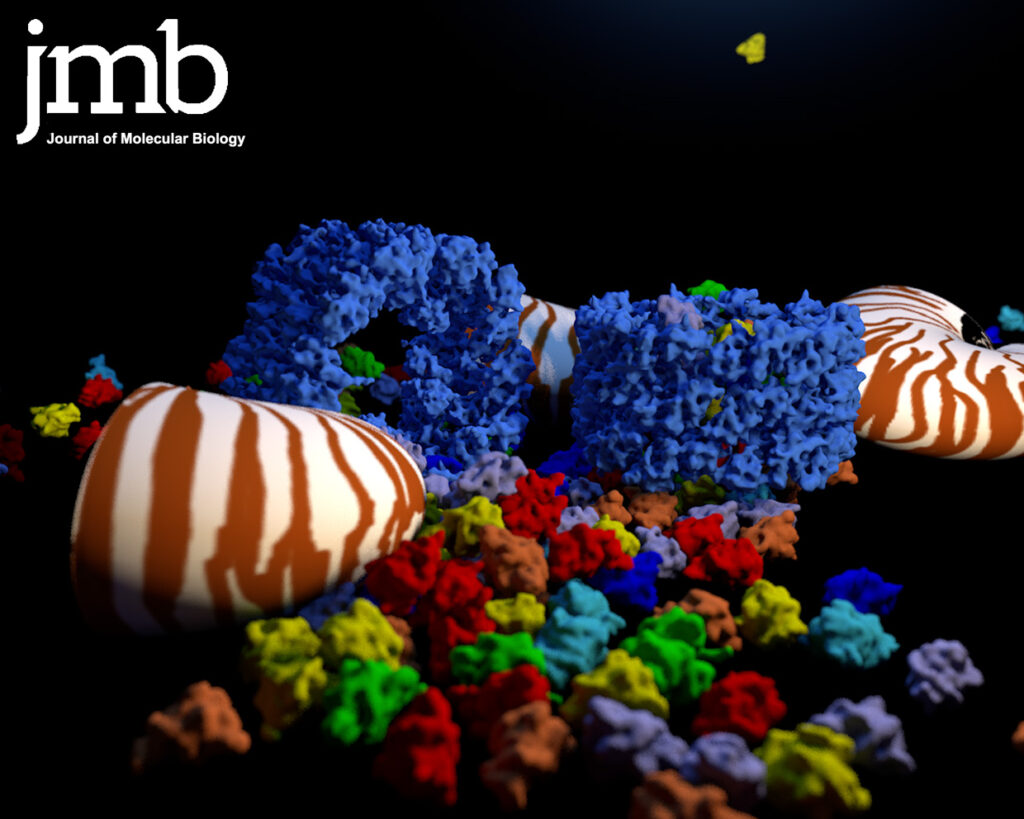
Christos Gatsogiannis, Arne Moeller, Frank, Depoix, Ulrich Meissner, Jürgen Markl
Hemocyanins are giant extracellular oxygen carriers in the hemolymph of many molluscs. Nautilus pompilius (Cephalopoda) hemocyanin is a cylindrical decamer of a 350 kDa polypeptide subunit that in turn is a “pearl-chain” of seven different functional units (FU-a to FU-g). Each globular FU has a binuclear copper centre that reversibly binds one O2 molecule, and the 70-FU decamer is a highly allosteric protein. Its primary structure and an 11 Å cryo-electron microscopy (cryo-EM) structure have recently been determined, and the crystal structures of two related FU types are available in the databanks. However, in molluscan hemocyanin, the precise subunit pathway within the decamer, the inter-FU interfaces, and the allosteric unit are still obscure, but this knowledge is crucial to understand assembly and allosterism of these proteins. Here we present the cryo-EM structure of Nautilus hemocyanin at 9.1 Å resolution (FSC1/2-bit criterion), and its molecular model obtained by rigid-body fitting of the individual FUs. In this model we identified the subunit dimer, the subunit pathway, and 15 types of inter-FU interface. Four interface types correspond to the association mode of the two protomers in the published Octopus FU-g crystal. Other interfaces explain previously described morphological structures such as the fenestrated wall (which shows D5 symmetry), the three horizontal wall tiers, the major and minor grooves, the anchor structure and the internal collar (which unexpectedly has C5 symmetry). Moreover, the potential calcium/magnesium and N-glycan binding sites have emerged. Many interfaces have amino acid constellations that might transfer allosteric interaction between FUs. From their topologies we propose that the prime allosteric unit is the oblique segment between major and minor groove, consisting of seven FUs from two different subunits. Thus, the 9 Å structure of Nautilus hemocyanin provides fundamentally new insight into the architecture and function of molluscan hemocyanins.
DOI: 10.1016/j.jmb.2007.09.036
PMID: 17936782